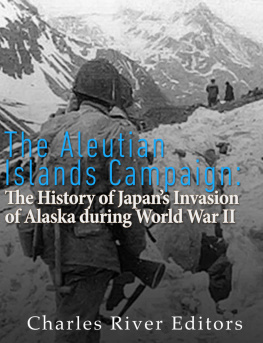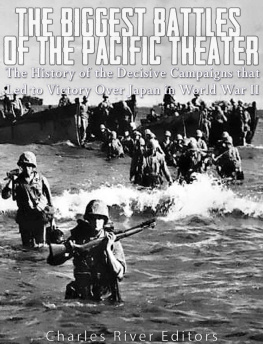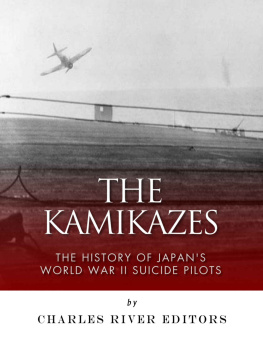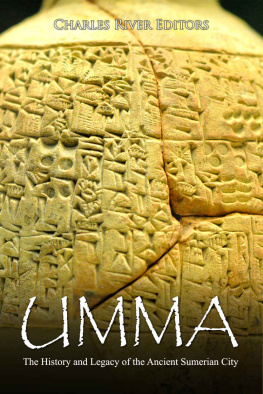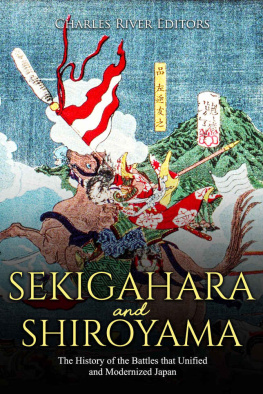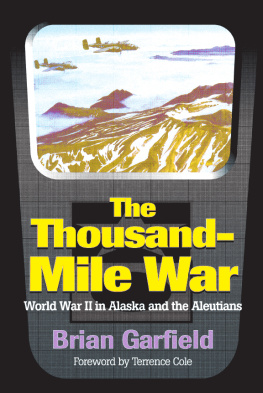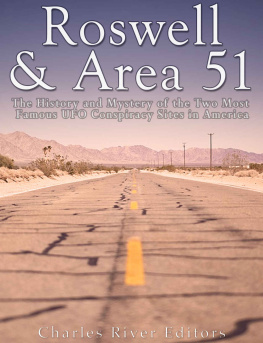Charles River Editors - The Aleutian Islands Campaign: The History of Japan’s Invasion of Alaska during World War II
Here you can read online Charles River Editors - The Aleutian Islands Campaign: The History of Japan’s Invasion of Alaska during World War II full text of the book (entire story) in english for free. Download pdf and epub, get meaning, cover and reviews about this ebook. year: 2016, publisher: Charles River Editors, genre: Romance novel. Description of the work, (preface) as well as reviews are available. Best literature library LitArk.com created for fans of good reading and offers a wide selection of genres:
Romance novel
Science fiction
Adventure
Detective
Science
History
Home and family
Prose
Art
Politics
Computer
Non-fiction
Religion
Business
Children
Humor
Choose a favorite category and find really read worthwhile books. Enjoy immersion in the world of imagination, feel the emotions of the characters or learn something new for yourself, make an fascinating discovery.
- Book:The Aleutian Islands Campaign: The History of Japan’s Invasion of Alaska during World War II
- Author:
- Publisher:Charles River Editors
- Genre:
- Year:2016
- Rating:3 / 5
- Favourites:Add to favourites
- Your mark:
- 60
- 1
- 2
- 3
- 4
- 5
The Aleutian Islands Campaign: The History of Japan’s Invasion of Alaska during World War II: summary, description and annotation
We offer to read an annotation, description, summary or preface (depends on what the author of the book "The Aleutian Islands Campaign: The History of Japan’s Invasion of Alaska during World War II" wrote himself). If you haven't found the necessary information about the book — write in the comments, we will try to find it.
The Aleutian Islands Campaign: The History of Japan’s Invasion of Alaska during World War II — read online for free the complete book (whole text) full work
Below is the text of the book, divided by pages. System saving the place of the last page read, allows you to conveniently read the book "The Aleutian Islands Campaign: The History of Japan’s Invasion of Alaska during World War II" online for free, without having to search again every time where you left off. Put a bookmark, and you can go to the page where you finished reading at any time.
Font size:
Interval:
Bookmark:
By Charles River Editors

A Picture of American Troops during the Campaign in May 1943

Charles River Editors provides superior editing and original writing services across the digital publishing industry, with the expertise to create digital content for publishers across a vast range of subject matter. In addition to providing original digital content for third party publishers, we also republish civilizations greatest literary works, bringing them to new generations of readers via ebooks.
Sign up here to receive updates about free books as we publish them , and visit Our Kindle Author Page to browse todays free promotions and our most recently published Kindle titles.

A Picture of American Troops during the Campaign
The Aleutians Campaign
It was United States territory. That's something you don't do. You don't come over and grab some of our land. So we had to take it back regardless of strategy. We couldn't just let them sit there. - Admiral Robert L. Dennison, USN (Perras, 2003, 189)
We took a foolish liking to the [Aleutian Islands] and poured in too much materiel and unnecessary personnel, making it impossible to leave. There are many islands like that in the south. - Admiral Onishi Takijiro, IJN (Chandonnet, 1995, 42)
Fought over bitterly cold flecks of rock and tundra scattered across the remote waters marking the boundary between the Bering Sea and the Pacific Ocean, the Aleutian Islands campaign represented one of the strangest encounters of World War II. Curving southwestward from the southwest coast of Alaska like the tail of a stingray, the rugged, volcanic Aleutians belong to both the United States and Russia. The westernmost island, Attu, lies much closer to Russia's Kamchatka Peninsula than to Alaska; the distance to Anchorage, Alaska measures approximately 2,000 miles.
The famous Doolittle raid provided the catalyst setting off the battle between the Japanese and Americans for possession of the Aleutian Islands. After the Japanese surprise attack on Pearl Harbor, President Roosevelt repeatedly asked the head admirals of the U.S. Navy for a plan to bomb Japan directly. Such a strike would greatly boost American morale while dealing a serious blow to that of the Japanese.
Fleet Admiral Ernest King, Commander-in-Chief United States Fleet (COMINCH) deputed two of subordinates to conduct feasibility research Captains Donald Duncan and Captain Francis S. Frog Low. King, a prickly character with equal passions for highly aggressive naval strategy and strong drink, worked tirelessly to direct sufficient resources to the Pacific Theater to assure victory there, so the project of a counterstrike to Japan represented a scheme he could pursue with gusto.
Frog Low a highly competent officer soon promoted to Rear Admiral and assigned to managing the Atlantic anti-submarine warfare of such vessels as the renowned USS Bogue conceived of the Doolittle Raid on Japan after visiting the new carrier USS Hornet CV-8. His plan involved launching twin-engine B-25 bombers from the Hornet, whose flight deck ordinarily lacked sufficient length for a B-25's takeoff.

A B-25
However, Low realized, adding the carrier's full speed ahead velocity and sailing directly into a headwind shortened the B-25's takeoff distance enough to match the actual length of the deck, enabling the medium bombers to successfully get airborne from the Hornet. With landing on the carrier again an impossibility, the B-25s would fly straight on after bombing Japanese cities and land in China, where the Nationalist Chinese of Chiang Kai-Shek would assist the pilots in escaping.
Though the Japanese detected the USS Hornet and the USS Enterprise in the seas east of Japan, they discounted their own reconnaissance aircraft reports of twin-engine bombers flying towards Tokyo because they believed such aircraft could not launch from a carrier deck. Many Japanese military personnel waved as the American bombers swooped over Yokohama harbor, and Tojo Hideki himself observed one B-25 at point blank range as it flew past his personal aircraft. A man named Koiwa Kazuei at the naval arsenal described the result of the raid: The sky was full of the unfamiliar low-flying squat black American military aircraft. Antiaircraft fire exploded in the sky high above them. In a dry dock in front of his office, the warship Daiho had been hit, and was emitting a ferocious cloud of black smoke. [...] Large numbers of wounded were being carried on stretchers to the infirmary next to the docks. (Toll, 2011, 272).
The men aboard USS Hornet , already steaming to safety, listened to the screeching voices and panicked confusion of Japanese radio announcers, and realized the mission's success. The Americans gained some amusement when they received translations of the hysterical speakers, speculating on vast fleets of Chinese, American, and Russian bombers launching from a secret airbase in Japan itself (proving even the Imperial Japanese susceptible to bizarre conspiracy theories), a huge supercarrier with a quarter-mile flight deck, or the Aleutian Islands.
The moral impact of the attack far outweighed the relatively minor material damage it inflicted; Japan lost face and the faith of its people in ultimate victory declined sharply. Americans responded with delight and a fresh upsurge of hope.
Despite interrogating the eight American aircrew they captured (and butchering tens of thousands of Chinese civilians in reprisal for assisting the rest in their escape), the Japanese leadership remained divided in their opinions about the bombers' origin. Many believed that the Americans had indeed devised a method of launching such large aircraft from an ordinary aircraft carrier.
Many others, however, insisted the B-25s came from a land base, and only the Aleutians lay within a medium bomber's operational range. In any case, Admiral Yamamoto Isoroku planned a move against Midway. Attacking the Aleutians provided an excellent diversion, in his opinion, permitting him time to take Midway and organize land-based strike aircraft there. He could then take his carriers to annihilate America's Pacific Fleet, caught between the Aleutian Islands and Midway.
Due to the belief that the Aleutian Islands might support the airfields from which the Doolittle bombers launched, Navy Order Eighteen from Imperial general HQ included a section decreeing the invasion and occupation of the western Aleutians... in order to prevent enemy forces from attacking the homeland (Garfield, 1978, 7).
In the event, the secondary operation to the Aleutian Islands proved more successful than the main thrust at Midway Island. In a triumph of cryptanalytic skill and poker-player daring, codebreaker Joseph Rochefort and his team at Hypo cracked Japanese messages proving the main effort aimed at Midway. The U.S. Navy intercepted Yamamoto's fleet at Midway and smashed its carriers in one of the most decisive actions of the Pacific Theater on June 3rd to 7th, 1942.
Font size:
Interval:
Bookmark:
Similar books «The Aleutian Islands Campaign: The History of Japan’s Invasion of Alaska during World War II»
Look at similar books to The Aleutian Islands Campaign: The History of Japan’s Invasion of Alaska during World War II. We have selected literature similar in name and meaning in the hope of providing readers with more options to find new, interesting, not yet read works.
Discussion, reviews of the book The Aleutian Islands Campaign: The History of Japan’s Invasion of Alaska during World War II and just readers' own opinions. Leave your comments, write what you think about the work, its meaning or the main characters. Specify what exactly you liked and what you didn't like, and why you think so.

